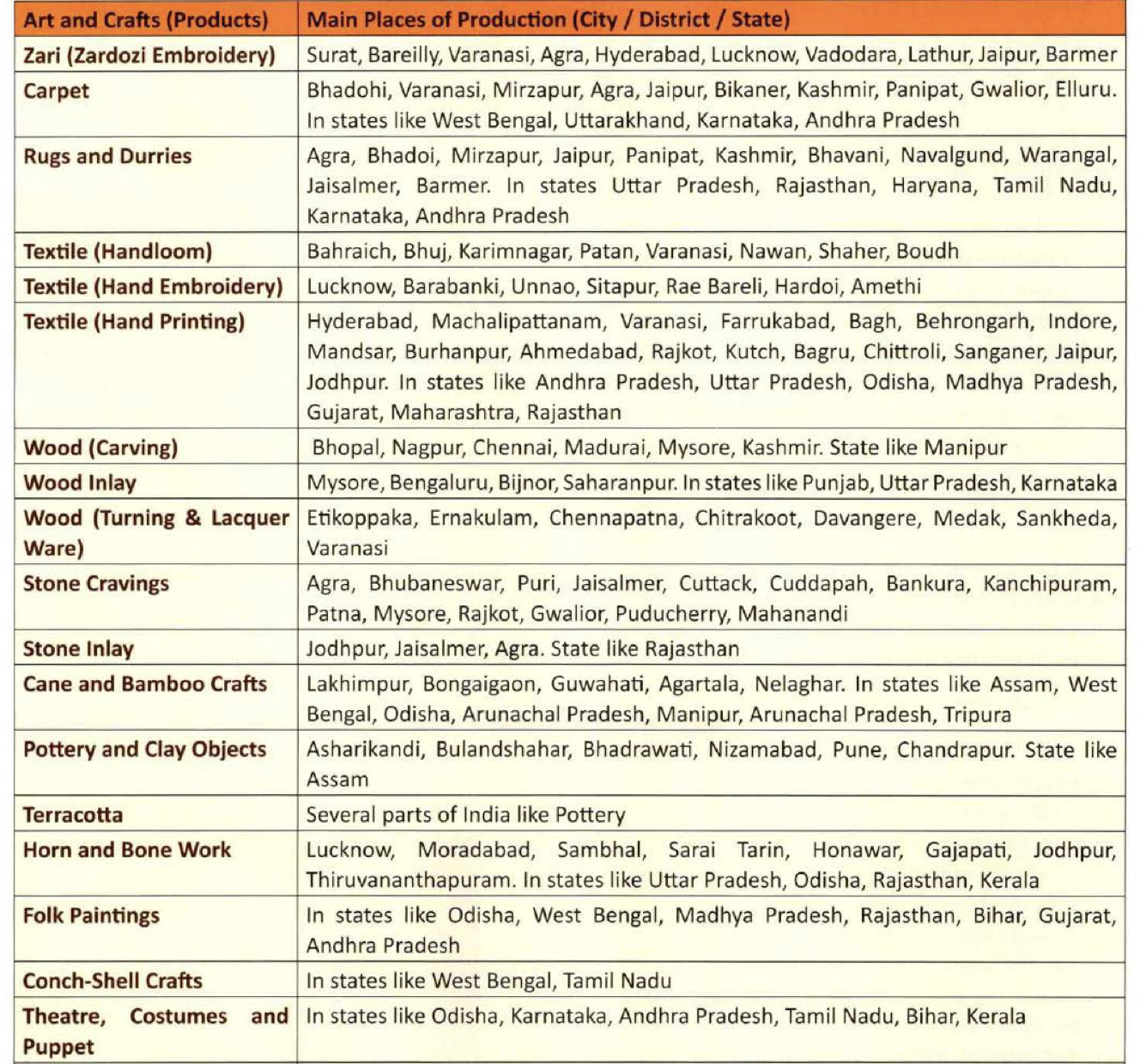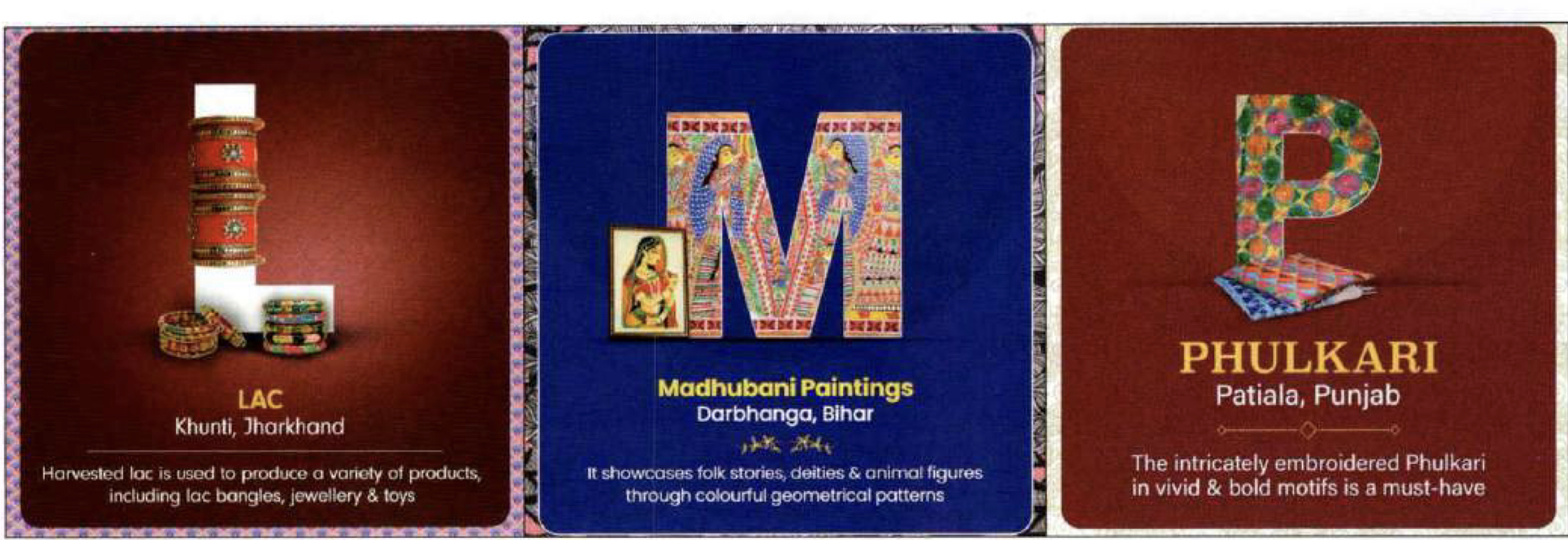ForumIAS announcing GS Foundation Program for UPSC CSE 2025-26 from 19 April. Click Here for more information.
Contents
- 1 Introduction
- 2 What is the One District One Product (ODOP) Initiative?
- 3 What are the various rural crafts that can be promoted through ODOP?
- 4 What are the prospects and benefits of promoting rural crafts through ODOP?
- 5 What are the government initiatives in promoting rural crafts through ODOP?
- 6 What are the challenges faced in promoting rural crafts through ODOP?
- 7 What should be done to promote rural crafts through ODOP effectively?
| For 7PM Editorial Archives click HERE → |
Introduction
Promoting Rural Crafts through the ODOP (One District One Product) initiative in India has emerged as a powerful strategy for inclusive development and the revival of traditional art forms. ODOP aims to leverage the country’s rich demographic dividends by transforming rural areas into thriving entrepreneurial ecosystems. Through ODOP, India embraces its diverse craft heritage while propelling rural artisans towards economic self-reliance and global recognition.
What is the One District One Product (ODOP) Initiative?
The One District One Product (ODOP) initiative is a program implemented by the Indian government to promote inclusive development and empower rural communities through the development and promotion of unique products from each district. Inspired by the Japanese concept of One Village One Product (OVOP), ODOP aims to revive and preserve indigenous art, crafts, and traditional knowledge by creating a sustainable environment for their production. The initiative has gained recognition for its bottomup approach and its contribution to integrated development in India.
The major goals of ODOP are: (a) To promote and produce indigenous art and crafts, (b) To preserve traditional knowledge, (c) To support artisans and craftsmen, (d) To support livelihood and employability of rural/local community, (e) To boost exports through vocal for local, and (f) To attain balanced regional development.
| Read more: One District One Product Scheme (ODOP) |
What are the various rural crafts that can be promoted through ODOP?

What are the prospects and benefits of promoting rural crafts through ODOP?

Market expansion and increased sales: Access to the ODOP GeM Bazar and e-commerce platforms enhance market reach. Artisans can sell their products nationally and internationally, leading to increased sales and revenue.
Preservation of cultural heritage: ODOP promotes indigenous arts and crafts, safeguarding traditional knowledge and skills. Crafts such as Rogan arts, Mithila paintings, and Wood carvings are preserved and passed down through generations.
Socio-economic empowerment: Supporting artisans and craftsmen improves their livelihood and employability. Rural communities benefit from increased income and reduced poverty levels.
Boosting exports and enhancing India’s image: ODOP aligns with the “vocal for local” initiative, leading to increased exports of local crafts. Handloom textiles, pottery, and other products gain international recognition, enhancing India’s reputation as a cultural hub.
Regional development and balanced growth: ODOP ensures balanced regional development by focusing on every district’s unique product. By promoting crafts across various regions, ODOP prevents the concentration of growth in urban areas.
Skill development and quality improvement: Support from ODOP leads to skill development among artisans, enhancing their craftsmanship. Through training and guidance, product quality improves, making rural crafts more competitive in the market.
Increased visibility and international exposure: Showcasing ODOP products at international platforms, such as the World Economic Forum, brings global attention. Crafts like Phad paintings, Terracotta, and Handloom textiles gain exposure, attracting international buyers.
Self-reliance and Aatmanirbhar Bharat: Promoting rural crafts aligns with the goal of self-reliance and strengthens India’s economy. ODOP contributes to India’s self-sufficiency by supporting local artisans and reducing dependency on imports.
Tourism and cultural promotion: Unique crafts under ODOP, such as Kathputli paintings and Tanjore paintings, attract tourists, promoting cultural tourism. Visitors are drawn to regions known for their distinct crafts, boosting local economies and preserving cultural heritage.
| Read more: [Kurukshetra May 2023 Summary] Potential of rural handicrafts and rural tourism – Explained, pointwise |
What are the government initiatives in promoting rural crafts through ODOP?
One District One Product (ODOP) Scheme: The ODOP scheme implemented by the central government focuses on developing and promoting a unique product from each district, aiming to create a brand identity and boost exports.
Districts as Export Hub (DEH) initiative: The DEH initiative, launched by the Directorate General of Foreign Trade (DGFT) under the Department of Commerce, aims to transform districts into export hubs by identifying products with export potential.
ODOP GeM Bazar: The ODOP GeM Bazar is a government e-marketplace that promotes the sale and procurement of ODOP products across the country.
Support for marketing and international collaboration: ODOP products are showcased in international platforms like the World Economic Forum, allowing artisans to gain exposure and recognition on a global scale. This enables rural crafts to reach international markets and enhances the export potential of these products.
Institutional mechanisms: The government has established State Export Promotion Committees (SEPC) and District Export Promotion Committees (DEPC) to provide institutional support and address issues related to export promotion. Through these committees, artisans and craftsmen receive guidance, assistance, and necessary interventions to improve their marketing strategies, access funding, and overcome challenges in promoting their crafts to both domestic and international markets.
Foreign trade policy 2023: The Government of India has unveiled the Foreign Trade Policy 2023, which focuses on new potential export areas and highlights the role of districts as export hubs.
| Read more: Mission to map rural India’s cultural assets covers over one lakh villages |
What are the challenges faced in promoting rural crafts through ODOP?
Poor institutional arrangements and support: Many artisans struggle to access financial support or find it difficult to navigate bureaucratic procedures when seeking assistance for their craft enterprises.
Inaccessible funds and financial constraints: Limited availability of financial institutions or schemes specifically tailored to the needs of artisans and craftsmen.
Ineffective backward and forward linkages for marketing: Due to this, artisans may find it challenging to reach a wider customer base due to a lack of marketing channels or difficulty in establishing connections with wholesalers or exporters.
Low adoption of technology and modern techniques: Limited access to and awareness of technological advancements in design, production, and marketing. This limits the competitiveness in the contemporary market.
Lack of marketing skills and intelligence: Artisans may face challenges in identifying market demands, pricing their products appropriately, or effectively promoting their crafts to attract a wider customer base.
Sustainability and Environmental Concerns: The challenge lies in preserving the authenticity of rural crafts while adopting sustainable practices such as using natural dyes, responsibly sourced materials, or minimizing waste generation.
What should be done to promote rural crafts through ODOP effectively?
Create a conducive ecosystem: Improve coordination and collaboration between various government departments, financial institutions, and industry experts to create a conducive ecosystem for rural crafts.
Accessible and tailored financial assistance: Simplify loan procedures and ensure the availability of accessible credit facilities to meet the financial requirements of rural craft businesses.
Enhance Marketing: Develop robust marketing strategies, including market research, branding, and effective promotion techniques, to expand the reach of rural crafts.
Foster market linkages: Foster strong backward and forward linkages by connecting artisans with potential buyers, retailers, exporters, and e-commerce platforms to increase market access.
Skill Development and Technological Integration: Provide training programs and skill development initiatives to empower artisans with marketing skills, entrepreneurship training, and knowledge of modern production techniques. Also facilitate the adoption of technology in rural craft production, including digital tools, e-commerce platforms, and online marketing channels, to enhance competitiveness.
Collaboration and Partnerships: Foster collaborations between artisans, government agencies, industry associations, and non-profit organizations to create synergies and share best practices. Apart from this, there is a need to facilitate international collaborations and partnerships to expand market opportunities for rural crafts through trade fairs, exhibitions, and cultural exchange programs.
Monitoring and Evaluation: Regularly monitor and evaluate the impact of ODOP initiatives, identifying bottlenecks and areas for improvement. Collect feedback from artisans and craft communities to ensure their voices are heard and their needs are addressed effectively.
Source: Kurukshetra
Syllabus: GS 3: Economic development: Indian Economy and issues relating to planning, mobilization, of resources, growth, development and employment.




